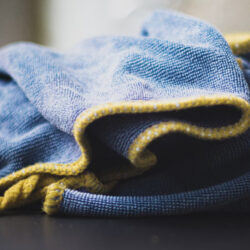There’s nothing like a cleanser that actually works as advertised, bulldozing through dirt and leaving a surface sparkling clean. But conventional cleaning products can actually leave indoor air polluted with a toxic smog of petrochemical volatile organic compounds (VOCs) and the synthetic fragrances used to mask them.
Think, then, what damage cleaning products used on a regular basis year-round can do in the enclosed space of a home, where VOCs can build up for months. “When they evaporate, they are transported directly to the brain, where they can be as intoxicating as ether or chloroform,” says Kaye Kilburn, professor of internal medicine at the University of Southern California medical school. “They are palpably dangerous to health.” In other words, when someone complains of being knocked out after cleaning house, it’s likely more than just a turn of phrase.
Cleaning product VOCs, many of which are neurotoxins and known or suspected carcinogens and/or hormone disruptors, have been implicated in headaches, dizziness, watery eyes, skin rashes and respiratory problems. A Spanish study published in 2003 surveyed more than 4,000 women and found that 25 percent of asthma cases in the group were attributable to domestic cleaning work.
Here are some ingredients to avoid in cleaning products, and safer, simpler alternatives.
Detergents for Dishes, Clothes, Floors and Countertops. Most conventional soaps are made from petroleum, a nonrenewable resource. Some contain alkyphenol ethoxylates (APEs), suspected hormone disruptors that can threaten wildlife after they go down the drain. Inhalation of vapors from butyl cellosolve, used as a solvent to dissolve grease, may irritate the respiratory tract and cause nausea, headaches, dizziness and unconsciousness. As with an overly perfumed loved one, the synthetic fragrances in these products can make you sneeze and wheeze. “Fragrances are common allergens and repeated exposures can lead to onset of allergies, including symptoms such as skin and respiratory tract irritation, headache and watery eyes,” says Dr. Harvey Karp, a Los Angeles pediatrician and assistant professor of medicine at UCLA. A family of chemicals known as phthalates, used in synthetic fragrances, have been found to produce cancer of the liver and birth defects in lab animals. Look on labels for safer and more eco-friendly ingredients such as grain alcohol as a solvent, and natural plant oils (olive, palm, pine, coconut, eucalyptus, citrus, peppermint or lavender) as a soap base. Choose soaps and detergents labeled “fragrance free.”
Chlorine Bleach. Also known as sodium hypochlorite and sodium hydroxide, this common disinfectant, found in liquid bleach, drain cleaners and oven cleaners (combined with caustic lye), can burn skin and eyes and be fatal if swallowed. When it goes down the drain, it can produce organochlorines, which are suspected carcinogens as well as reproductive, neurological and immune-system toxins. Instead, use nonchlorine bleaches based on hydrogen peroxide, sodium percarbonate or sodium perborate. Borax, washing soda or white vinegar in water can also clean and remove stains. For ovens, coat surfaces in a paste of water and baking or washing soda and let stand overnight, then scrub off while wearing gloves.
Glass and Bathroom Cleaners. Ammonia, the main ingredient in many window, tub, toilet and tile cleaners, is caustic and poisonous if ingested–and, if combined with chlorine, present in many scouring products, produces toxic chlorine gas! Instead, use chlorine-flee scouring powders or baking soda. For windows and mirrors, mix white vinegar with water. Safer toilet bowl and other cleaning solutions are sold by Seventh Generation, Ecover and others.
After you’ve given the toxic products the heave-ho, you’ll discover that greener cleaning products are now widely available. Most use natural cleansers, from lemon to baking soda, as their base. Ingredients in Bi-O-Kleen’s cleaner/degreaser, laundry detergent and spray-and-wipe, for example, include grapefruit seed and pulp, coconuts, soybeans, oranges and limes, corn, aloe, vegetable fiber, cider vinegar and cold-pressed essential oils. Most green cleaning products are biodegradable, and most are not tested on animals. One of the best all natural cleaners for jobs all over your home, office, farm garage and more is Quick’n Brite. It is truly the only cleaner you need, and is 100% biodegadable and safe around children and pets.
For chemical free cleaning of hardwood, tile, linoleum and more, use a microfiber mop.



 Ordering Info
Ordering Info Customer Service
Customer Service Follow Us
Follow Us Search For Stuff
Search For Stuff Find Us
Find Us Call Us
Call Us Pay Us
Pay Us

Great tips! In researching cancer prevention, we eliminated essentially all cleaning products in our home. The statistics tell it all. The Environmental Protection Agency has ranked indoor air 4th in environmental causes of cancer. Women who work at home are 54 percent more likely to develop cancer. If we want to lower our risk of cancer, a good start it to make the choices you recommend!
Lynne Eldridge M.D.
Author, “Avoiding Cancer One Day At A Time: Practical Advice for Preventing Cancer”
http://www.avoidcancernow.com